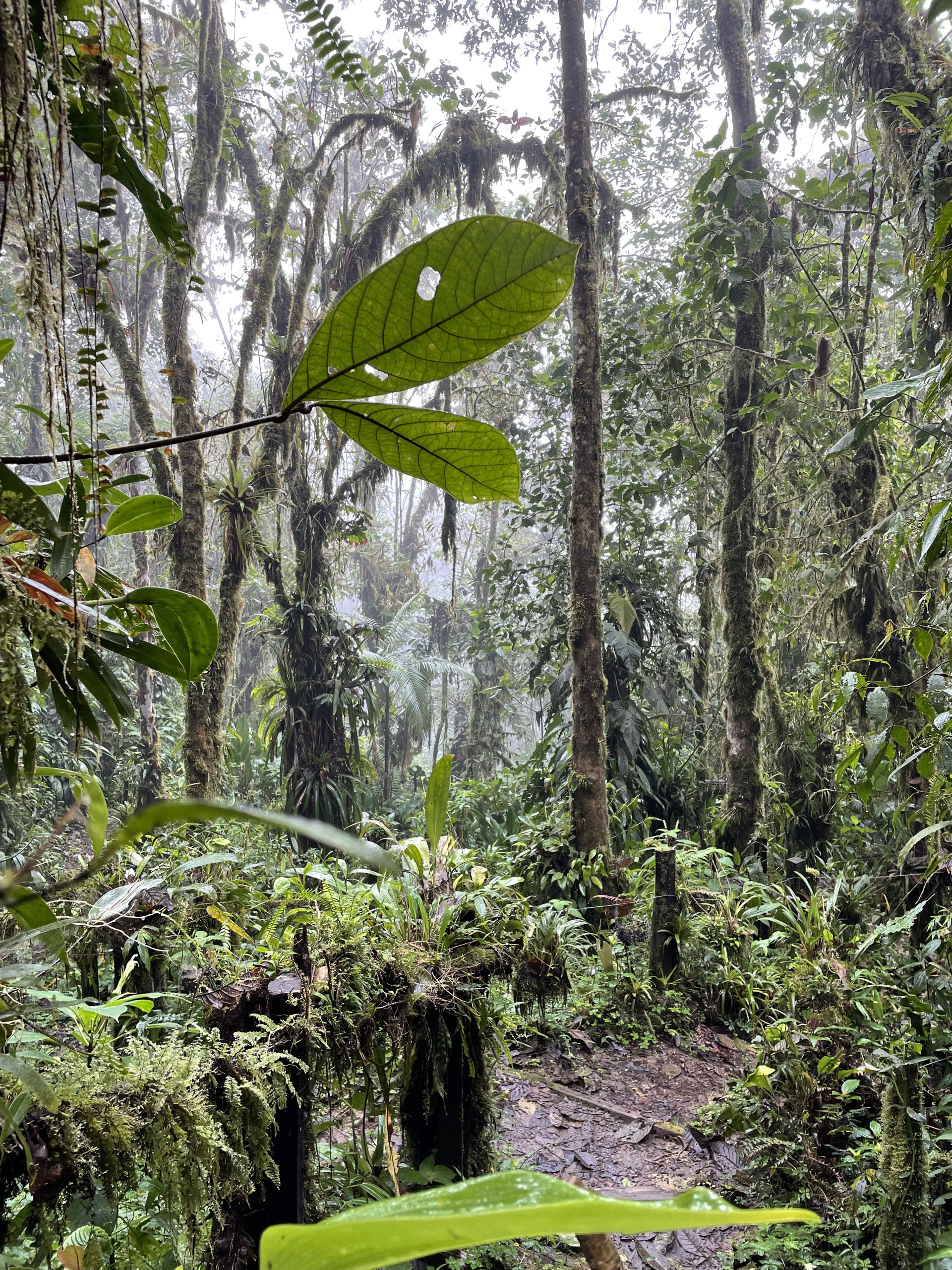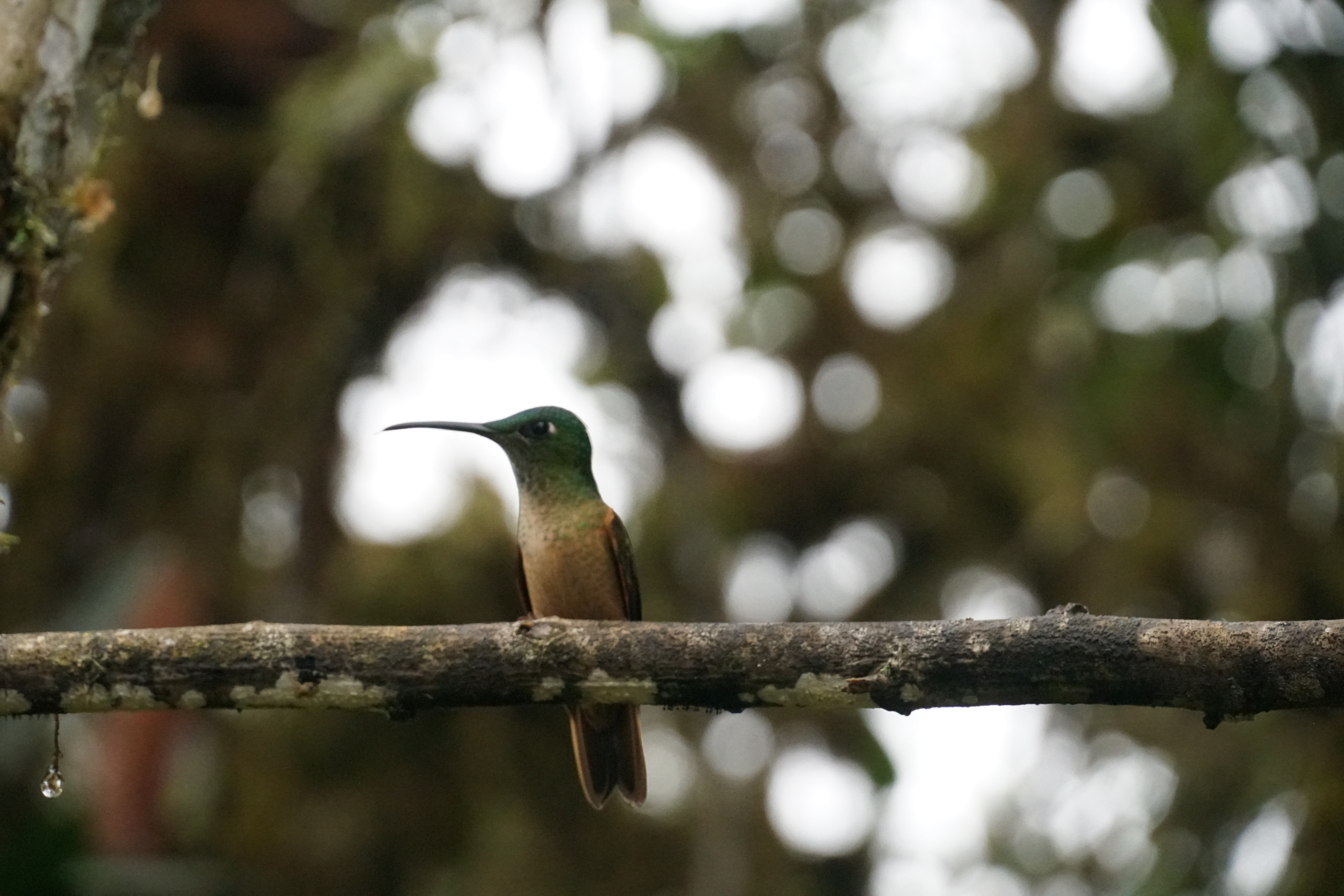Santa Lucía
I have never been anywhere so green. Everywhere I look is a different shade of green layered on top of other green plants. It is impossible to capture because it fills me with the feeling that the world is fully alive and I am just one small part of all that life. This is a humbling experience and a powerful way of putting the impact my life has on other life into perspective. While staying at Santa Lucia, an ecolodge in the Ecuadorian cloud forest, I began to realize the complexity of my impact on the environment by learning the stories of plants and birds in the cloud forest.

The first plant was introduced by our guide, Javier. He handed each of us a leaf and encouraged us to get to know it. At first it just looked like an ordinary leaf, but as Javier prompted us with questions I began to notice the small teeth on its edge and little hairs that felt like Velcro. I then felt the trunk of the tree where the leaf had come from and uncovered layers of wet bark revealing the dry bark underneath. Javier gradually explained the reasons for these characteristics: the tree is protecting itself from rain by shedding its bark in layers, and using the little hairs on its leaves to make water run off. This story made me think more critically as we hiked in the cloud forest about why different plants, birds, and insects are the way they are. Each species became an evolutionary puzzle to be solved as I wondered what makes each characteristic beneficial to that species. This mindset made me acutely aware of the complex ways that all the plants function as a result of their adaptations to the unique cloud forest environment.
After a long day of hiking and classes, I collapsed into one of the hammocks on the Santa Lucia porch. Every couple of minutes my attention was captured by a flash of movement and color and I would look up to see a hummingbird zooming around the bushes. I realized that I would only rarely see the same type of hummingbird as there were so many variations in color, tail length, and beak. I then learned that there are 132 species of hummingbirds in Ecuador while there are only 15 species in the entire United States. This incredible amount of biodiversity is a pattern in the cloud forest for many different species. While this biodiversity leads to exciting forest adventures, it also serves a greater purpose that is seen through interspecies interactions. When there is high biodiversity, the interactions between each species are weaker. For instance, if there is only one species of hummingbird in an ecosystem, if that hummingbird becomes extinct the role that hummingbird played in its ecosystem is no longer being filled. But if there are many species of hummingbirds, then the extinction of one of those species will have a much milder effect on the ecosystem. So, high biodiversity improves an ecosystem’s ability to adapt to change. In this way, the resiliency of the world lies in biodiversity.

These lessons from the cloud forest gave me a new appreciation for the complexity and importance of ecosystems that have been shaped through environmental adaptation. This made me consider how my daily actions affect the biodiversity of this place and through that the resiliency of the environment. This consideration has been central to most of our classes and excursions in Ecuador. At Santa Lucia, this became more personal to me as I began to recognize the different trees, birds, and orchids and became familiar with their stories of evolution. This familiarity has made me more invested in the well-being of this place and I know that I will carry this with me as we continue to learn about the biology and sustainability of Ecuador.
You must be logged in to post a comment.